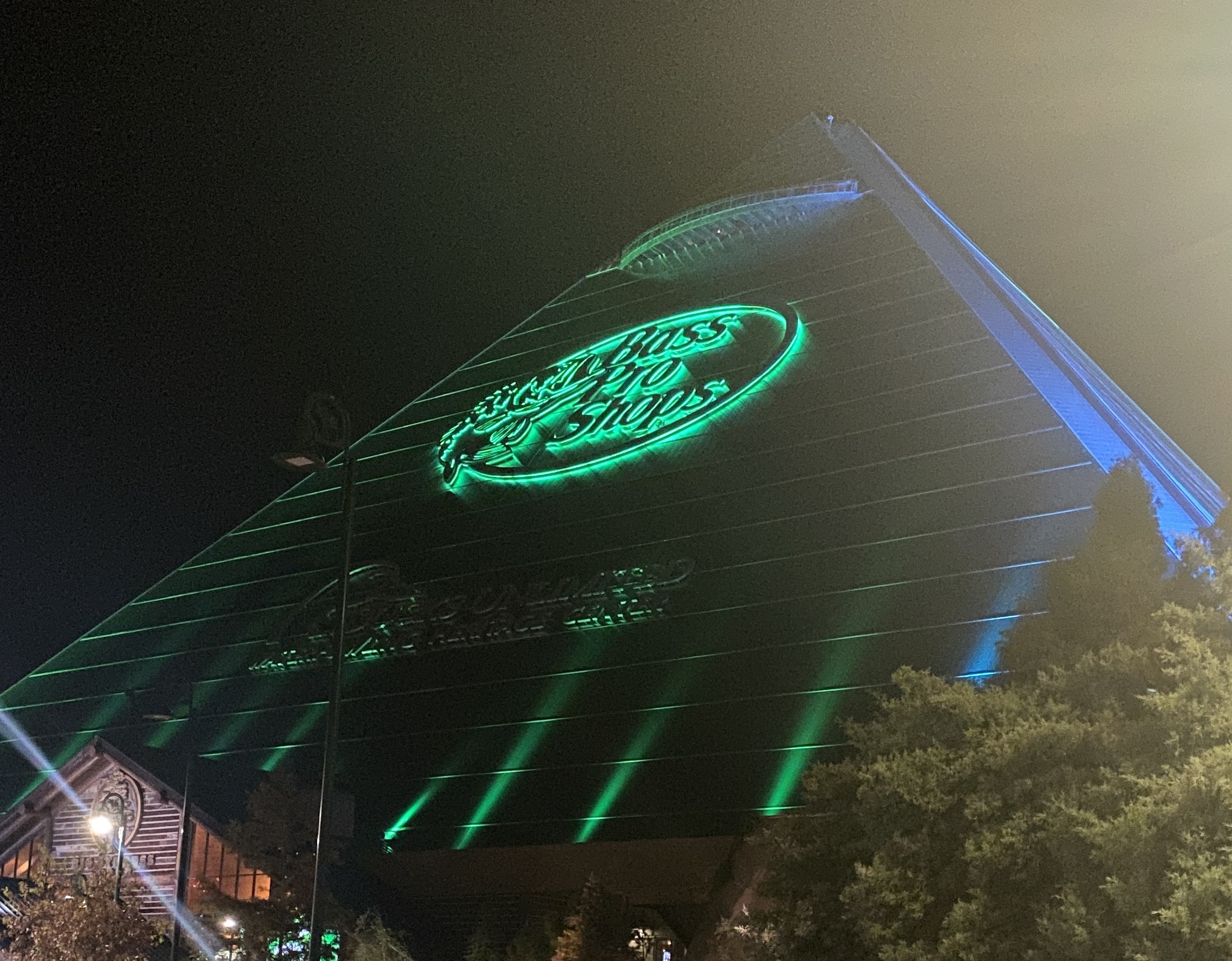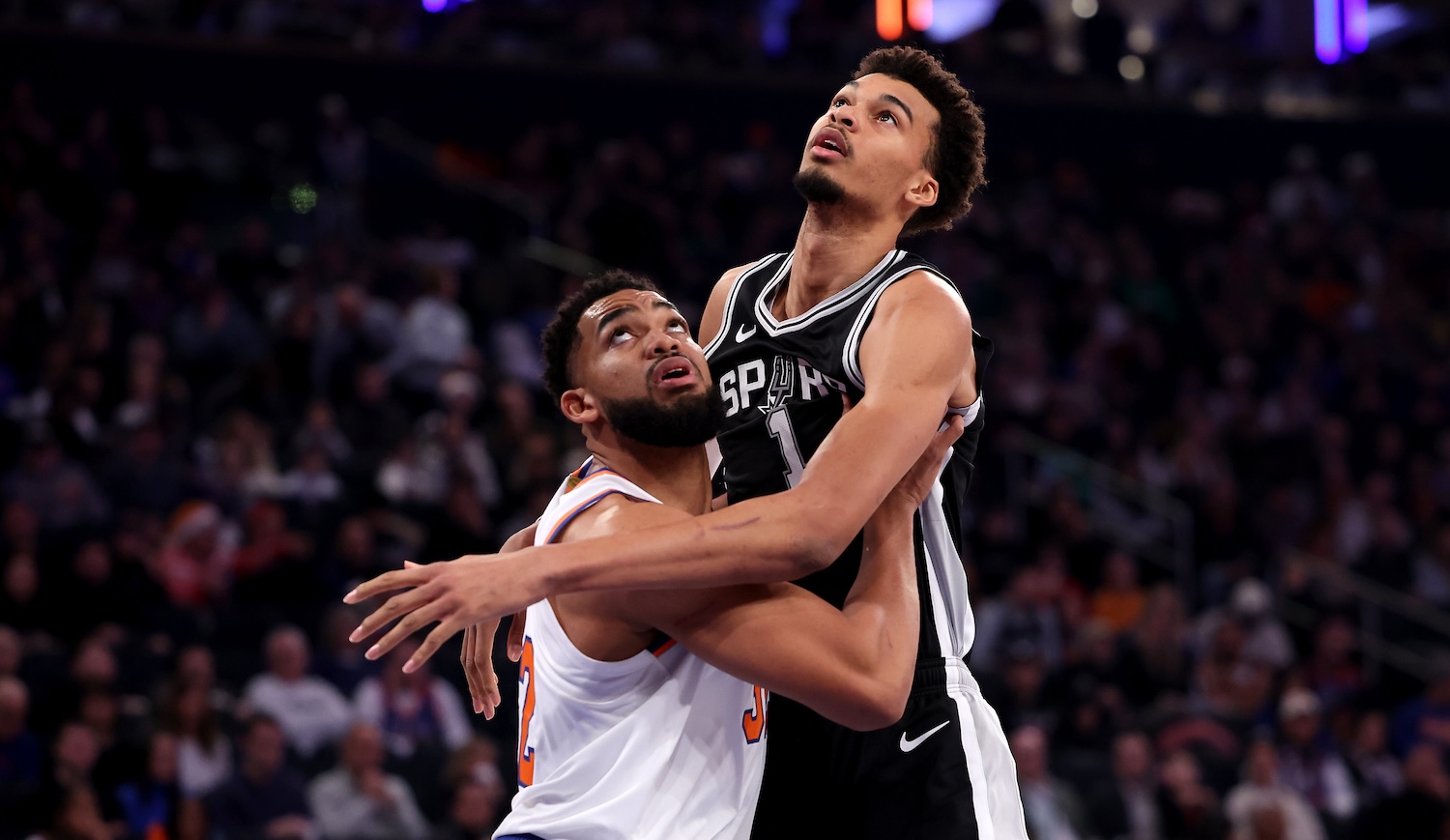MEMPHIS — Last weekend, I embarked upon a hero's journey to ascend to the top of the Bass Pro Shops Pyramid. I was technically in town for a science writing conference, but it felt as if I had traveled to Tennessee solely for the Pyramid. I had never traveled this far to see something so big; it felt like visiting the Neopets Giant Omelette in real life. It was the closest I'd come to a pilgrimage.
I'd also never been inside a Bass Pro Shops before Saturday, but I had been inside a Cabela's, a hunting-and-fishing subsidiary of Bass Pro Shops that boasts a similarly respectable number of taxidermied animals and Pink Camouflage for Women™. But, of course, this wasn't just any Bass Pro Shops; it was inside a 321-foot-tall pyramid emerging, cyst-like, from the flat horizons of downtown Memphis.
The full name of this eighth wonder of the world is the Bass Pro Shops at the Pyramid in Memphis. It often ranks among the top 10 tallest pyramids in the world—apparently there are conflicting ways of measuring pyramids—and was once a basketball arena for the Memphis Grizzlies until they fled for less triangular pastures. The Pyramid languished for years, which Hard Rock Cafe founder Isaac Tigrett subtly attributed to the removal of a crystal skull he had installed inside the pyramid—thusly disrupting the "cosmos," he warned. Nevertheless, the Pyramid reopened in 2015, triumphant, as a Bass Pro Shops.
As someone who loves all creatures, it is strange to be inside any Bass Pro Shops. The franchise simultaneously celebrates the beauty of big creatures and the thrill many people feel in killing them. I understand that sustainable hunting and fishing play a part in conserving wildlife and natural resources, albeit one that often prioritizes the conservation of creatures people like to kill. I will probably always feel uncomfortable with hunting and fishing outside the realm of subsistence. Of course, there is no "SUBSISTENCE" sign at the Bass Pro Shops Pyramid, and the wares they peddle, including semi-automatic rifles, far exceed what is necessary even for sport hunting.
The day before, I'd opened iNaturalist to see if anyone had tagged wildlife inside of the Pyramid, and found two observations—a ruddy duck and a long-nosed gar—so I knew creatures dwelled inside. And yet none of this history or context could prepare me what I saw upon stepping inside the Pyramid: an artificial, self-contained ecosystem practically bustling with life, the Bloomingdale's of indoor swamps. I felt as if I had wandered into a giant terrarium. Fake cypress trees dripping with Spanish moss loomed above the racks of "Don't Tread On Me" mugs, the green branches fading into the dark and pointy blackness above, illuminated only by the Mountain Dew–colored lights of the elevator to the top of the pyramid. My time inside the Pyramid was a bit of a blur—I'm pretty sure I blacked out at least once from sensory overload—but I'd like to take you on a tour of every living creature I encountered inside, and also some dead ones.
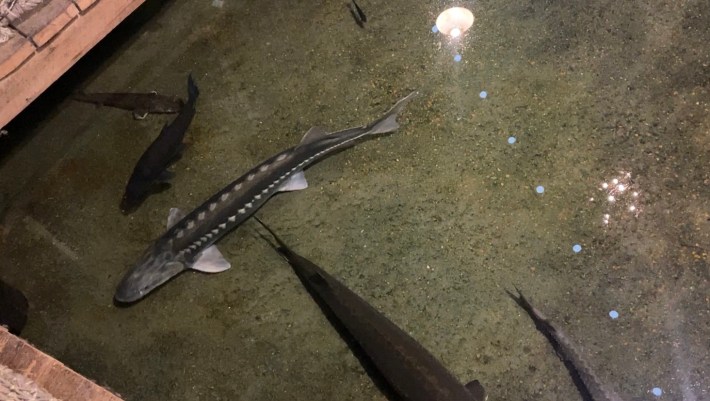
Lake Sturgeon
While waiting in a long line to pay $8 to take the elevator and see Memphis from the top of the Pyramid, I noticed an enormous sturgeon drifting in the waters below the wooden planks I was standing on. I almost couldn't believe my eyes; I had mentally prepared myself to see bass, which are certainly big and impressive fish but are absolutely dwarfed by the big and subtly prickled body of a sturgeon. Sturgeon are an ancient species from an evolutionary point of view, having been around this planet in some form for around 200 million years. In North America, sturgeon are culturally important to many Indigenous peoples living near their waters, and sturgeon thrived here until white settlers nearly drove the fish extinct. An individual fish can live longer than a century, and as I stared at the sturgeon swimming between the fudge shop and the Sunglass Hut, I wondered how old the biggest ones were—probably older than me—and who would outlive the other: the sturgeon or the Bass Pro Shops at the Pyramid.
Alligator
After boarding the $8 elevator, I made eye contact with several young alligators floating in the waters on the other side of the glass. They were so still as to appear dead, which was perhaps fitting given that anything with four legs inside the Pyramid has a 99 percent chance of being dead and stuffed, such as the boar, deer, muskrats, and all the other taxidermied creatures adorning the fake land abutting the fake swamp. (The lone exception was a dachshund, on a leash and very much alive.) The gators were all tiny and obviously young, and a friend beside me speculated if they were being raised for the "gator bites" on the menu at the Wahlburgers Wild housed inside a towering hut on the edge of a swamp. I laughed and said no, that would be ludicrous. But in the silence that followed, I wondered how many gator bites there are inside an alligator.
Bass
What else can I say? There were bass. In abundance. I didn't even think to take a picture of them because they were less creature than backdrop. Bass everywhere, as far as the eye could see.
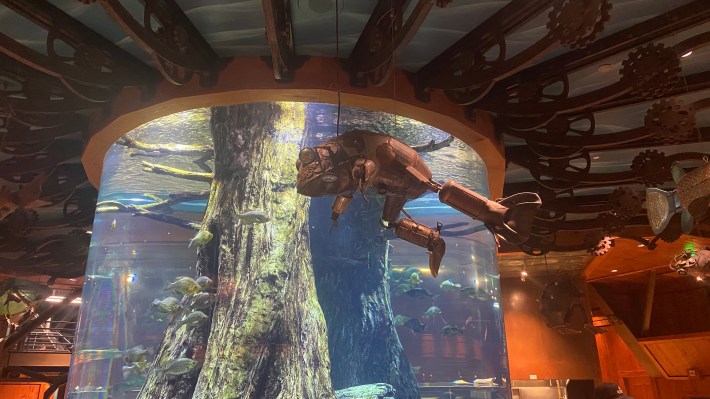
Steampunk Frog
Technically the metal frog hanging from the ceiling of the Lookout restaurant at the top of the Pyramid was never alive and will never have the chance to be dead, but I loved it. I saw the Steampunk Frog shortly after seeing a freshly married couple, a bride in her wedding dress and a groom in his wedding suit, get their picture taken by a stranger with an iPhone at the top of the balcony. They were perhaps the two happiest creatures in the whole ecosystem of the Pyramid that night.
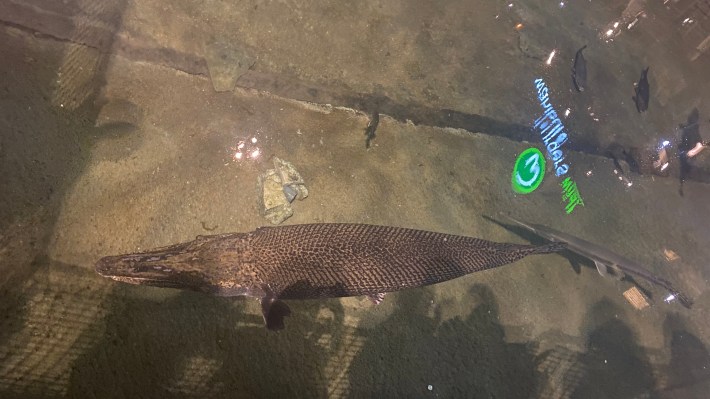
Gar
When I saw an enormous gar floating, stick-like, outside the entrance to the Wahlburgers Wild, it felt like I was seeing a celebrity. I follow Solomon David, an aquatic ecologist who loves gar more than a wife guys love wives, on Twitter, where he spreads the gospel of gar. I'd never seen a gar in real life, and the gar drifting by the rippling green reflection of the Wahlburgers Wild sign was massive. Gar are enormous freshwater fishes, with long bodies and long snouts. There was something deliciously eerie about walking by a pool of big fish that are so still as to appear suspended in the water.
I was also excited to see a gar because it is a native fish that has historically been overlooked by fishers and resource management agencies. Native fish like gar, paddlefish, and sturgeon that are not traditional game species, such as trout or bass, are all currently or have previously been devalued as as "rough fish" or "trash fish," David and colleagues wrote in a paper published in Fisheries magazine in 2021. Many of these native species, such as suckerfish and sturgeon, were historically valued by Indigenous peoples and people of color, but not prioritized in management strategies set by white settlers, the authors argue. The largest species of the gar family, the alligator gar, can grow longer than eight feet long and weigh 300 pounds. But many populations were extirpated or significantly reduced after people killed the gars via poison, dynamite, and electrocution. Outside the Bass Pro Shops, freshwater biodiversity is declining rapidly; a study in BioScience estimated the extinction rate for North American freshwater fishes to be 877 times greater than the background extinction rate for freshwater fishes.
David has tweeted about how Bass Pro Shops has contributed to the plight of these native fishes by sponsoring bowfishing tournaments, such as this one that offered $25,000 to the team with "the most pounds of carp, buffalo, or gar in the boat." So it was strange to admire the gar at Bass Pro Shops, beautiful creatures surrounded by thousands of packaged ways of killing them. But it was not lost on me that the faux swamp at the Bass Pro Shops was the largest freshwater aquarium I'd ever seen, devoted to the kinds of fish often sequestered to a corner of an aquarium, if they are included at all. Here, at least, they were the star of the show.
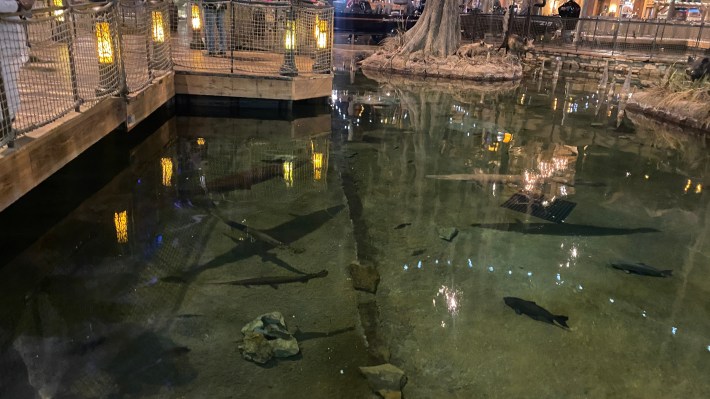
After we'd left the Bass Pro Shop, my friend Ari returned the following day, as one does, and saw two coins glinting from atop the big gar's back—when you a wish upon a gar, etc.
Spotted Moray Eel
Famished by our unexpectedly hours-long jaunt in the Pyramid, we had no choice but to dine at the Wahlburgers Wild, which, if it wasn't yet obvious, is a burger chain owned by brothers Paul, Donnie, and Mark Wahlberg. The pun was funny, although not funny enough to make me forget that the last Wahlberg of the bunch has done multiple hate crimes. We were seated by an enormous saltwater fish tank where flamboyant fish swam in languid loops. Just as we were leaving the restaurant, we noticed a white and black spotted moray eel had emerged from its hiding rock—how special!—but we could not stay any longer lest we never leave the Pyramid. When we stumbled out into the parking lot, all I knew was this: I had entered the Bass Shops Pro Pyramid when the sun came out and when I left it, night had long fallen. And even though I had thrown no coins into the gar pond, it felt like my wishes had come true.
